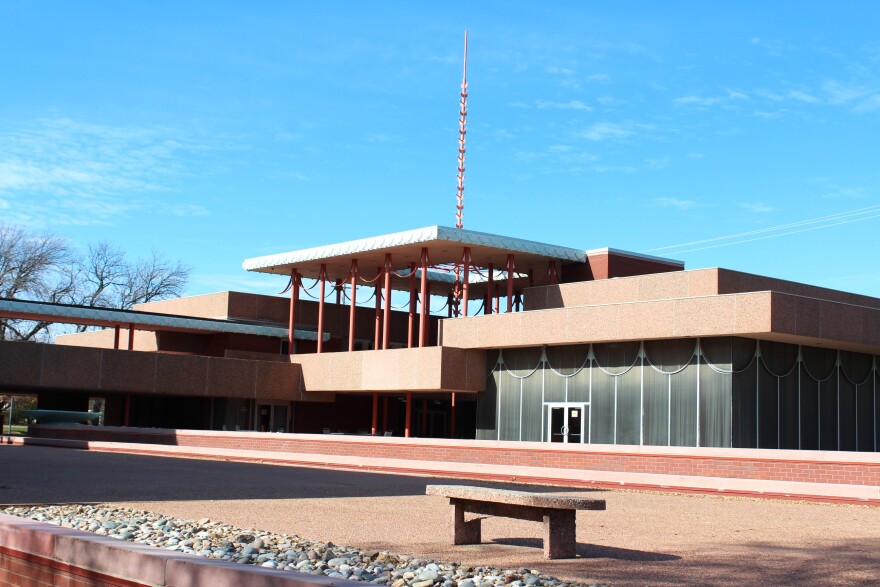Knowing the history of a place can make people appreciate being there even more. That was the goal of a recent guided history tour of Wichita State University for students and staff, led by history professor Jay Price.
The first school envisioned on the modern-day WSU campus was a religious school for women, but its doors never opened.
WSU officially got its start as the co-ed Fairmount College in 1895 with support from the Congregational Education Society.
Price said early covenant housing around the university was only for descendants of white Christians.
“So this was an era of race-restrictive covenants,” he said. “There was an opportunity, but not for everyone.”
Land just north of WSU’s campus was once home to a college preparatory school for Native American boys called the Roe Indian Institute, later the American Indian Institute.

The prep school was founded in 1915 by Winnebago tribe member Henry Roe Cloud and accepted students from tribes across North America. At the time, it was the only college prep school run by and for American Indians. It closed in 1935.
Price said the school stood out among other schools for Native Americans at the time because of how it treated its students and their cultures.
“It’s absolutely a religious school,” he said. “But [Roe Cloud] also supports the pride of being Native American and encouraging Native Americans to continue their traditions in their artwork and so forth.”
South of the American Indian Institute, the Fairmount College became known as the Municipal University of Wichita, or Wichita University, after the city took control of it in the 1920s.
The “State” was added to WSU’s name once it became a Regents university like Kansas State University and the University of Kansas. At one point, there was also a failed push to rebrand to “The” Wichita State University, like Ohio State.
“Some folks in the community refer to us, sometimes affectionately, as Hillside High,” Price said.
Then there’s the story of how the school’s mascot became known as “WuShock.”

Price said a former football coach told reporters they were the wheat shockers because many students worked in wheat fields. That’s where “shockers” comes from.
The school later became known as Wichita University, WU, or “Wu.” Combine the two, and you end up with “WuShock.”
While WSU no longer has a football team, it lays claim to a couple of firsts in the history of the sport.
It’s one of three schools that claims it threw the first forward pass in a game.
It also claims to have hosted the first football game at night west of the Mississippi River, under gas lamps.
It’s a common misconception that WSU’s football team ended after the 1970 plane crash that killed several players, coaches and supporters. But it was actually about 15 years later, when the team was not performing well.
Since then, there have been calls for the return of football to campus and some good-natured jokes about the program.
“You’ll still see t-shirts that say ‘WSU Football - Undefeated Since 1987,’” Price said.
Today, the school honors victims of the plane crash at a memorial each year on the anniversary of the accident.
Price’s tour ends at one of the most unique buildings on campus: the Corbin Education Center.
It was designed by renowned 20th-century architect Frank Lloyd Wright to be used as a telecommunications building in Iraq.

But the government of Iraq was overthrown, and the design was adapted for the building on campus in the 1960s. Its design elements make it stand out from any other space at WSU.
“A lot of Middle Eastern features are really incorporated in this structure,” Price said. “In particular, you have these big shafts of open space that are designed to facilitate airflow.”
The building was recently added to the National Register of Historic Places, the first to earn the designation on WSU’s campus.
The guided tour was a one-time event for WSU students and staff, but the university does have a self-guided audio tour available to the public on their website. It was produced in-part by KMUW.


